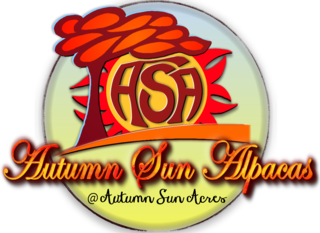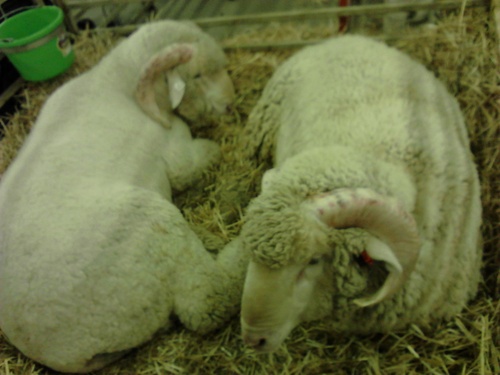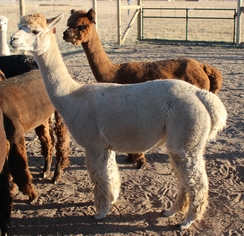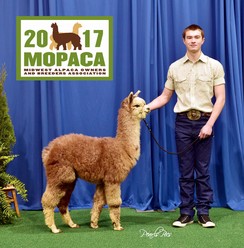The Livingstons having fun at 2013 National Western Stock Show!
Monday, January 28, 2013
As a family, we were able to go to the NWSS in Denver, Colorado this last weekend. It was great fun to see the various different breeds of 'other livestock' during the course of our wanderings through the buildings.
CATTLE
We managed to view some of the cattle showing in the arena, observing how fast the judging went in comparison to alpaca showing. After the exhibitors entered the ring en masse, the judge walked down the front and the back of the row. Then, the exhibitors began walking in a circle around the judge who stood in the center of the ring. There was no individual review-by-touch from the judge for conformation; instead, the judge parsed them as they walked by, ranking them from lowest to the highest (1st) place. The fact that the cattle were not touched in the ring showed why judicious clipping and spraying of their coat, as we observed in the animals being laborious prepared for show in the barn, could be a benefit to the exhibitor. All exhibitors were ranked and the top 10 received their ribbon. It was very interesting to see the differences between showing cattle and alpacas.
Back in the cattle barn, we also saw some miniature Herefords. But, perhaps because they seem more of a novelty than livestock, or for the general disarray of the area and reserved attitude of the owners we greeted, we didn't stay long in those aisles. We quickly encountered other notable bovine just an aisle over. We were enthusiastic in talking to some breeders of the Highland cattle originating from Scottland. With its shaggy hair this cattle almost looked cute, certainly eye-catching, especially when these nicely trained show cattle were carefully tethered to their posts :). But the the long horns that all true Highland cattle sport, regardless of gender, remind you that these are indeed cattle. Mary immediately asked whether their fiber was ever spun into yarn (no) and Michael asked about their production and market weights. Despite their long tresses, these were meat cattle by purpose. The boys enjoyed touching the long hair and horns, under supervision and with the owner's approval. It was very interesting to be the 'newbee' asking rudimentary questions!
SHEEP
The sheep showing was more 'hands on' for the two handlers, who did not use a lead and sometimes found themselves suspended from the necks of leaping sheep. Not surprisingly without a lead, the sheep were not walked around the judge. Interesting, the 2nd handler placed their legs in the accepted stance. Since the sheep on this day were not market (meat) sheep, I am not certain how the judge could accurately assess the fiber qualities without touching the animals. Without this individual animal review, the judging in the show ring went very fast again, in comparison to alpaca showing. We lingered in the sheep barn area, looking at the impressive Rambouillet and festive Jacob sheep that were present ("Mom, this one has FIVE horns!"). We also spoke for a while with a lady who recently moved back to Colorado with her herd of St. Croix hair sheep. Wow, this interesting sheep looked more like a smaller, thinner Great Pyrenees dog than the fluffy or shaggy sheep that is more common. Not unexpectedly, these sheep do not have much staple length and their hair/fiber is not really processed for 'wool'; instead they are raised for their easy care meat production. Again, we found ourselves on the 'other end' of the discussion -- asking lots of questions and learning about an animal new to us.
DOGS, HORSES, & BISON - OH, MY
On our way out of the building to the outdoor pens, we were able to catch some of the herding dog trials. What amazing patience and intelligence these dogs have; the time taken by owner and dog to achieve this ability must have been intensive. We also stopped for quite a while to admire the beautiful draft horses preparing for their event. That amount of shining, chromed, massive gear that was strapped to these horses was daunting. knowing the hundreds of dollars spent on just a 'regular' horse's show halter, it must have been a small fortune in tack alone! It made you wonder what these horses looked like with armored knights on their back, for which they were originally bred. We sorely wished we could see these impressive teams at work, but shied away from the ticket gate for the event. The path to the yaks in the outdoor pens led over the Bison in a catwalk, meant to keep people safe I think. Watching two Bison bulls tussle in a large pen reminded us why we chose alpacas over Bison or Elk as our livestock of choice. It was interesting to watch them slam their massive bodies into each other and the massive fences -- a bit like how it would feel to be around the raw power of wild animals on a safari.
YAK
After the catwalk, we arrived at the yak area and descended the long stairway to their dedicated enclosures. We actually had to make two stops at the yak pens outside, since at the first time no one was there. We quickly realized that there were not many yaks here as well and deduced that they were showing. We able to see some of the showing, which operated much like the cattle and sheep showing. Again, no animals were touched though the fiber was assessed by what the judge believed it would be like based on the outward appearance of the animal. More emphasis was placed on the movement, size/frame, and 'look' (shaggy, 'full fleeced' in alpaca terms) -- which makes me think that much of the yak industry is concentrated on the meat rather than the fiber. This was substantiated in our discussion with one of the farms, who said that the down is available on the neck to just behind the front leg, generally yielding 1-2 lbs before the expected 50% loss from dehairing in the mill processing. He admitted that they don't process or sell their fiber at all and just started showing last year after many years in the business. This was enlightening, since we were considering acquiring a couple of yaks for the 'novelty' and to add fiber to Mary's fiber fun blending with our alpaca fiber. But we are still mulling over whether this will be cost effective for us.
WHAT DID WE LEARN TODAY?
Over all, it was a very informative time! We learned about hardy animals in the cattle, sheep and yak 'groups' and were able to compare them to what we know about alpacas. We were able to experience what it was like to be a 'newbee' and what worked or not in how we were answered.
Though not the intention of our outing, this day served to remind us of the attributes of alpacas and what does make them one of the best livestock options available. We have found that alpacas are still such a versatile species -- producing pounds of fiber that can be as fine as cashmere as well as meat if you choose to process your culls, hardy in their nature and foraging abilities -- along with with a robust showing system that is cornerstone of the marked and quick improvement cycles in the industry, and support system of farms, affiliations, and organizations that help promote the breed and its fiber. All this with an animal that that is a manageable size and mellow in temperament -- often becoming the first thing on the list when you have to be around your animals on a daily basis!
Again, we are fortunate for our choice -- alpacas all the way!
ALPACAS -- FIND OUT THE BENEFITS! MAKE YOUR OWN COMPARISONS, AND BE IMPRESSED!
We managed to view some of the cattle showing in the arena, observing how fast the judging went in comparison to alpaca showing. After the exhibitors entered the ring en masse, the judge walked down the front and the back of the row. Then, the exhibitors began walking in a circle around the judge who stood in the center of the ring. There was no individual review-by-touch from the judge for conformation; instead, the judge parsed them as they walked by, ranking them from lowest to the highest (1st) place. The fact that the cattle were not touched in the ring showed why judicious clipping and spraying of their coat, as we observed in the animals being laborious prepared for show in the barn, could be a benefit to the exhibitor. All exhibitors were ranked and the top 10 received their ribbon. It was very interesting to see the differences between showing cattle and alpacas.
Back in the cattle barn, we also saw some miniature Herefords. But, perhaps because they seem more of a novelty than livestock, or for the general disarray of the area and reserved attitude of the owners we greeted, we didn't stay long in those aisles. We quickly encountered other notable bovine just an aisle over. We were enthusiastic in talking to some breeders of the Highland cattle originating from Scottland. With its shaggy hair this cattle almost looked cute, certainly eye-catching, especially when these nicely trained show cattle were carefully tethered to their posts :). But the the long horns that all true Highland cattle sport, regardless of gender, remind you that these are indeed cattle. Mary immediately asked whether their fiber was ever spun into yarn (no) and Michael asked about their production and market weights. Despite their long tresses, these were meat cattle by purpose. The boys enjoyed touching the long hair and horns, under supervision and with the owner's approval. It was very interesting to be the 'newbee' asking rudimentary questions!
The sheep showing was more 'hands on' for the two handlers, who did not use a lead and sometimes found themselves suspended from the necks of leaping sheep. Not surprisingly without a lead, the sheep were not walked around the judge. Interesting, the 2nd handler placed their legs in the accepted stance. Since the sheep on this day were not market (meat) sheep, I am not certain how the judge could accurately assess the fiber qualities without touching the animals. Without this individual animal review, the judging in the show ring went very fast again, in comparison to alpaca showing. We lingered in the sheep barn area, looking at the impressive Rambouillet and festive Jacob sheep that were present ("Mom, this one has FIVE horns!"). We also spoke for a while with a lady who recently moved back to Colorado with her herd of St. Croix hair sheep. Wow, this interesting sheep looked more like a smaller, thinner Great Pyrenees dog than the fluffy or shaggy sheep that is more common. Not unexpectedly, these sheep do not have much staple length and their hair/fiber is not really processed for 'wool'; instead they are raised for their easy care meat production. Again, we found ourselves on the 'other end' of the discussion -- asking lots of questions and learning about an animal new to us.
On our way out of the building to the outdoor pens, we were able to catch some of the herding dog trials. What amazing patience and intelligence these dogs have; the time taken by owner and dog to achieve this ability must have been intensive. We also stopped for quite a while to admire the beautiful draft horses preparing for their event. That amount of shining, chromed, massive gear that was strapped to these horses was daunting. knowing the hundreds of dollars spent on just a 'regular' horse's show halter, it must have been a small fortune in tack alone! It made you wonder what these horses looked like with armored knights on their back, for which they were originally bred. We sorely wished we could see these impressive teams at work, but shied away from the ticket gate for the event. The path to the yaks in the outdoor pens led over the Bison in a catwalk, meant to keep people safe I think. Watching two Bison bulls tussle in a large pen reminded us why we chose alpacas over Bison or Elk as our livestock of choice. It was interesting to watch them slam their massive bodies into each other and the massive fences -- a bit like how it would feel to be around the raw power of wild animals on a safari.
After the catwalk, we arrived at the yak area and descended the long stairway to their dedicated enclosures. We actually had to make two stops at the yak pens outside, since at the first time no one was there. We quickly realized that there were not many yaks here as well and deduced that they were showing. We able to see some of the showing, which operated much like the cattle and sheep showing. Again, no animals were touched though the fiber was assessed by what the judge believed it would be like based on the outward appearance of the animal. More emphasis was placed on the movement, size/frame, and 'look' (shaggy, 'full fleeced' in alpaca terms) -- which makes me think that much of the yak industry is concentrated on the meat rather than the fiber. This was substantiated in our discussion with one of the farms, who said that the down is available on the neck to just behind the front leg, generally yielding 1-2 lbs before the expected 50% loss from dehairing in the mill processing. He admitted that they don't process or sell their fiber at all and just started showing last year after many years in the business. This was enlightening, since we were considering acquiring a couple of yaks for the 'novelty' and to add fiber to Mary's fiber fun blending with our alpaca fiber. But we are still mulling over whether this will be cost effective for us.
Over all, it was a very informative time! We learned about hardy animals in the cattle, sheep and yak 'groups' and were able to compare them to what we know about alpacas. We were able to experience what it was like to be a 'newbee' and what worked or not in how we were answered.
Though not the intention of our outing, this day served to remind us of the attributes of alpacas and what does make them one of the best livestock options available. We have found that alpacas are still such a versatile species -- producing pounds of fiber that can be as fine as cashmere as well as meat if you choose to process your culls, hardy in their nature and foraging abilities -- along with with a robust showing system that is cornerstone of the marked and quick improvement cycles in the industry, and support system of farms, affiliations, and organizations that help promote the breed and its fiber. All this with an animal that that is a manageable size and mellow in temperament -- often becoming the first thing on the list when you have to be around your animals on a daily basis!
Again, we are fortunate for our choice -- alpacas all the way!




![Photo of [SALE! CHAMPION] AutumnSun's Major General](https://www.openherd.com/userFiles/219/996028/md_2018_636515506710725949.jpg)
![Photo of [SALE! SPOTS!!!] AutumnSun's Wesley](https://www.openherd.com/userFiles/219/1129030/md_2021_637645845005552692.jpg)